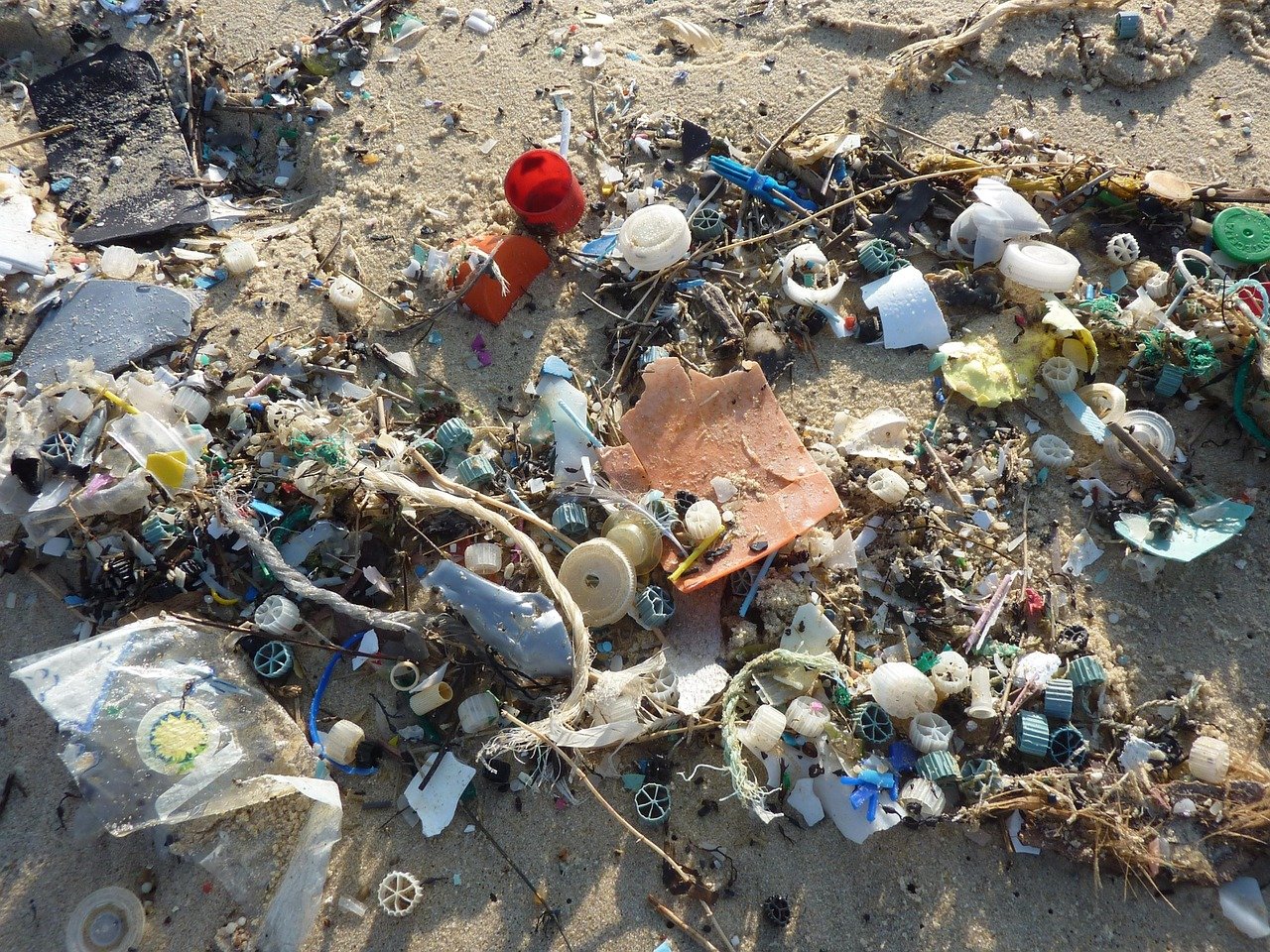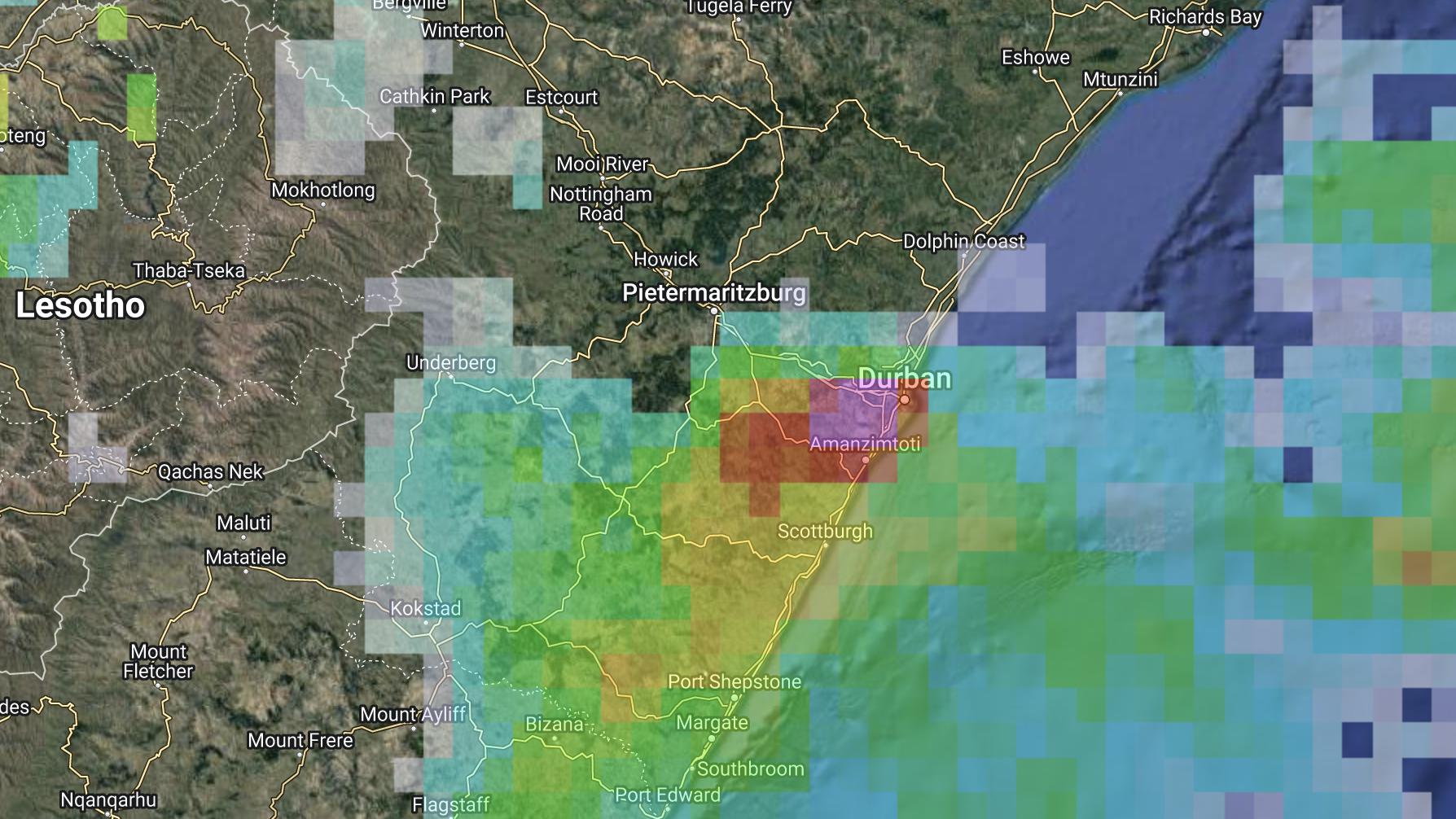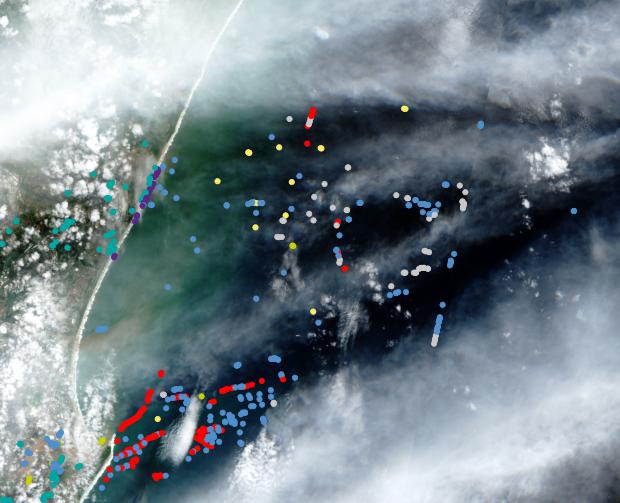
ΑΙhub.org
Deep learning model to help detect plastic in oceans

Our society relies heavily on plastic products and the amount of plastic waste is expected to increase in the future. If not properly discarded or recycled, much of it accumulates in rivers and lakes. Eventually it will flow into the oceans, where it can form aggregations of marine debris together with natural materials like driftwood and algae. A new study from Wageningen University and EPFL researchers, recently published in Cell iScience, has developed an artificial intelligence-based detector that estimates the probability of marine debris shown in satellite images. This could help to systematically remove plastic litter from the oceans with ships.
Automatic analysis
Accumulations of marine debris are visible in freely available Sentinel-2 satellite images from the European Space Agency that capture coastal areas every 2-5 days worldwide on land masses and coastal areas. Because these amount to terabytes of data, the data needs to be analysed automatically through models like deep neural networks. Marc Rußwurm, Assistant Professor at Wageningen University said: “These models learn from examples provided by oceanographers and remote sensing specialists, who visually identified several thousand instances of marine debris in satellite images on locations across the globe. In this way they ‘trained’ the model to recognise plastic debris.”
Improved detection
The researchers developed a marine debris detector that estimates the probability of marine debris present for every pixel in Sentinel-2 satellite images. The detector is trained following data-centric AI principles that aim to make best use of the limited training data that is available for this problem. One example is the design of a computer vision algorithm that snaps manual annotations from experts precisely to the debris visible in the images. With this tool, oceanographers and remote sensing experts can provide more training data examples by being less precise in the manual clicking of outlines.
Overall, this training method combined with the refinement algorithm teaches the detection model to better predict marine debris objects than previous approaches. Rußwurm: “The detector remains accurate even in more challenging conditions. For example when cloud cover and atmospheric haze make it difficult for existing models to identify marine debris precisely.”
 Heavy precipitation over Durban, South Africa on 22 April 2019, 19:00. Continued precipitation between 18th and 22nd of April led to the Durban Easter floods 2019 that washed substantial amounts of plastic litter into the Indian ocean, which are visible in Satellite images. Map data © 2023 Google. Precipitation data © JAXA Global Rainfall Watch.
Heavy precipitation over Durban, South Africa on 22 April 2019, 19:00. Continued precipitation between 18th and 22nd of April led to the Durban Easter floods 2019 that washed substantial amounts of plastic litter into the Indian ocean, which are visible in Satellite images. Map data © 2023 Google. Precipitation data © JAXA Global Rainfall Watch.
Following plastic debris
Detecting plastics in marine debris under difficult atmospheric conditions with clouds and haze is particularly important, as often plastics are washed into open waters after rain and flood events. This is shown by the Durban Easter floods in South Africa. In 2019 a long period of rain led to overflowing rivers, resulting in much more litter being washed away than normally. It was taken along through the Durban harbour into the open Indian Ocean. In satellite images, such objects floating between clouds are hard to distinguish when using common red-green-blue colour ‘channels’. They can be visualised by switching to other spectral channels, including near-infrared light.
Double view
Apart from more accurate prediction of marine debris aggregations, the detection model will also notice debris in daily-accessible PlanetScope images, coming from cubic nanosatellites. “Combining weekly Sentinel-2 with daily PlanetScope acquisitions can close the gap towards continuous daily monitoring”, explained Rußwurm. “Also, PlanetScope and Sentinel-2 sometimes capture the same patch of marine debris at the same day only a few minutes apart. This double view of the same object at two locations reveals the drift direction due to wind and ocean currents on the water. This information can be used to improve drift estimation models for marine debris.”
 The scientists tested the AI model predictions on Sentinel-2 satellite images of challenging atmospheric conditions with clouds and haze. In red, the correctly detected debris with plastic waste. © ESA / Cell iScience.
The scientists tested the AI model predictions on Sentinel-2 satellite images of challenging atmospheric conditions with clouds and haze. In red, the correctly detected debris with plastic waste. © ESA / Cell iScience.
Read the research in full
Large-scale detection of marine debris in coastal areas with Sentinel-2, Marc Rußwurm, Sushen Jilla Venkatesa, Devis Tuia, Cell iScience (2023).
Sentinel-2 and PlanetScope
ESA’s Sentinel-2 satellite constellation from the European Space Agency consists of two large satellites that cover the Earth every 2-5 days. They measure the reflected light in multiple spectral channels beyond the visible red-green-blue and up to 10m pixel size. The images are openly available.
PlanetScope Doves and SuperDoves make up a constellation of several hundred small CubeSats (nanosatellites) that cover the Earth every day at 3-7m pixel resolution. The images are not free to acquire, but can be used to a limited extent for research purposes at no cost through a Research and Education programme.
tags: Focus on life below water, Focus on UN SDGs








